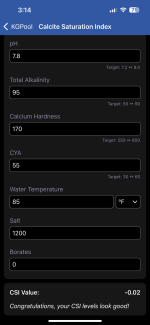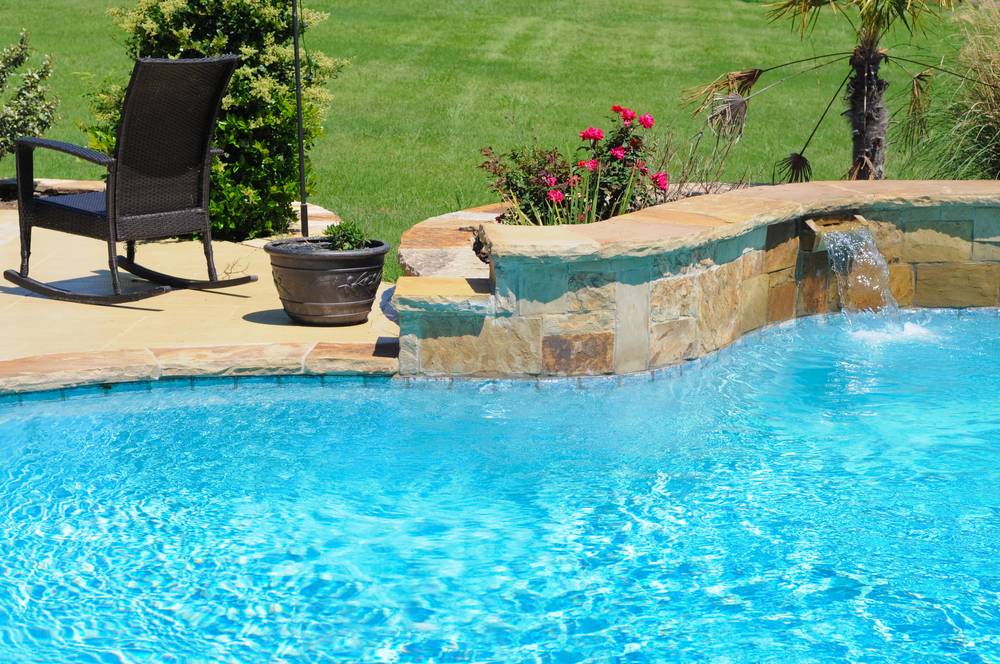- Jul 7, 2022
- 7
- Pool Size
- 14500
- Surface
- Plaster
- Chlorine
- Salt Water Generator
- SWG Type
- Hayward Aqua Rite (T-15)
Not sure what happened, this past winter, the PH and TA did creep up to 8.1 and 120, and the calcium dropped from 230 down to 130. Added some calcium and brought it up a little.
Any long term concerns with CH - 170 if I maintain my TA and PH within a reasonable range? Any reason to try and increase CH to meet the minimum recommendation over 200?
Thanks!

Any long term concerns with CH - 170 if I maintain my TA and PH within a reasonable range? Any reason to try and increase CH to meet the minimum recommendation over 200?
Thanks!

Last edited by a moderator:




